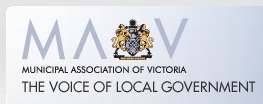With 75 percent of Victorian councils committed to the State Government’s 2.5 percent rate cap, tough conversations with communities are occurring so councils can trim their budgets.
The Municipal Association of Victoria (MAV) President, Councillor Bill McArthur said the reality of the cap was now hitting home, with some councils reassessing whether they will continue to deliver services that are a State Government responsibility.
“For decades, an increasing range of services have been provided by councils under shared funding agreements with the State. The MAV’s data shows that over time, the State’s contribution has reduced, stopped completely or not kept pace with costs – leaving ratepayers to foot the bill.
“As a key Victorian emergency services agency, our SES deserves to be adequately funded in the same way the State funds other emergency services. SES units should not be relying on councils, fundraisers and community goodwill to do such important work protecting our communities.
“The same can be said for school crossing supervisors which began as a joint 50:50 funding split in 1975 but now only has 20 percent of costs covered by the State, with councils contributing $44 million a year.
“Councils know the value of these services – they provide vital community safety and social equity outcomes. However the State’s rate cap has flushed out councils’ lowering tolerance to keep asking their communities to pay for some services that should be appropriately funded from the State Budget.
“Public libraries are now funded 83 percent by councils, with the State only providing 17 percent, creating a funding gap of $73 million annually for councils, despite an original 50:50 agreement. Maternal and child health services are closer to a 40:60 funding split, creating a gap of $13 million for councils in 2015-16.
“While most State fees are increased each July, State-set planning fees have not been indexed consistently since 2000, creating a $12 million gap in 2015/16, which has also fallen to ratepayers to cover the revenue shortfall.
“State cost shifting in excess of $140 million a year onto ratepayers for four services is just the tip of the iceberg. It’s simply not sustainable. Keeping rates low for communities is ideal, but only if it doesn’t come at the cost of losing vital services due to a lack of State funding.
Councillor McArthur said the MAV was gathering data on where the government is under-funding services delivered through local government and would pursue this issue with the State.








